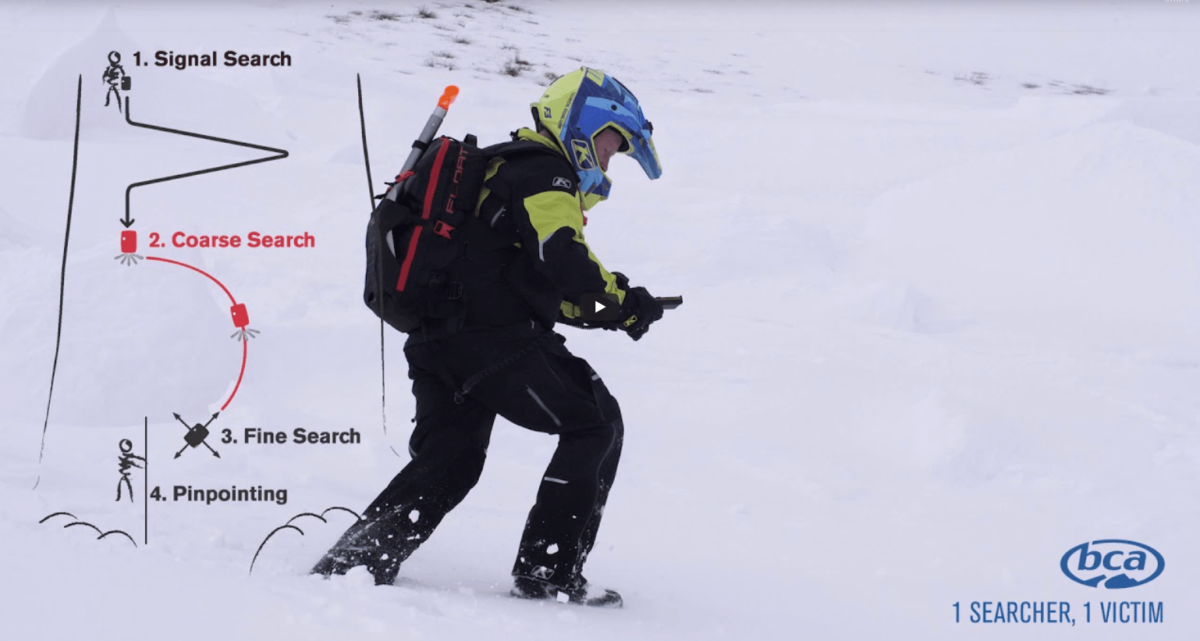The first phase of a search where you are trying to acquire a signal from a buried transceiver.
Make note of the last point that your partner was seen and if reasonable, start your search at that point, zig zagging downhill towards the debris. Before you get too focused on your transceiver, look for obvious clues on the snow surface such as a gloved hand, snowmobile, ski tip, or helmet sticking out of the snow. Make sure all members in your group have switched their transceivers from send to search. Conduct a search pattern with approximately 40 meters between transects and 20 meters from the flanks of the debris. This minimizes the amount of ground you have to cover while ensuring that you will pick up a transceiver’s signal regardless of its burial depth and orientation. You should be moving quickly through this phase of the search; it’s often best to stay on your skis or machine if the debris is soft or deep. Remember that electronic interference is possible from electronic devices and running snowmobiles; adjust your search habits accordingly. In this phase of the search, rotating and moving your transceiver will help acquire a signal sooner.
- Single Searcher: For a single searcher, the most efficient search pattern is to zig zag back and forth across the debris field, leaving no more than 40 meters between the widest part of the zig zag and approximately 20 meters from the flanks of the debris.
- Multiple Searchers: For multiple searchers, the most efficient search pattern is to conduct search strips down the slope, where each searcher is spaced out approximately 40 meters apart and 20 meters from the flanks of the debris. If the debris field is large, each searcher may have to conduct a zig zag pattern across a wider search strip.
